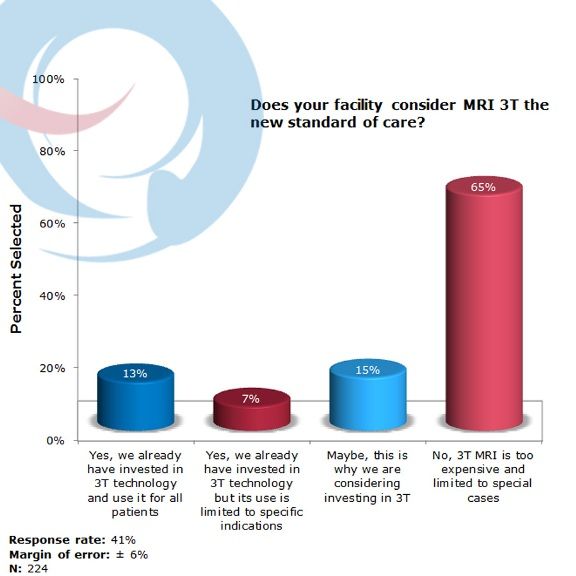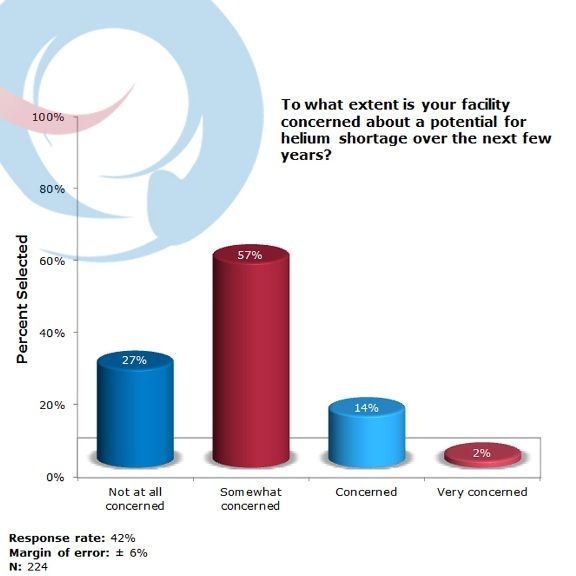MRI Advancements Improve Image Quality, Patient Comfort
Upgrade from 1.5T to 3T MRI? Invest in a wide bore machine or new software tools? Here’s what you need to know about the latest MRI advances.
When it debuted, industry experts hailed MR technology as an imaging advancement that provided high-resolution images without exposing patients to radiation. Now a new set of improvements rolling out is positively impacting not only image quality and patient comfort, but also the efficiency of your workflow.
With so many enhancements on the market, determining which ones are right for your practice or department can be overwhelming. Before making any purchasing decisions, analyze your needs, as well as your budget, said William Bradley, MD, PhD, FACR, chair of the University of California-San Diego radiology department.
“I always advise radiologists to buy the very best technology that they can afford,” said Bradley, who has published 180 studies and authored 20 textbooks on MRI. “With the looming reimbursement cuts to health care for radiologists, any magnet that you buy now, you’re going to have for 10 to 20 years.”
From 1.5T to 3T
One of the biggest MRI shifts is the migration from the 1.5T machine to the 3T models that have twice the magnetic field strength. Originally approved by the FDA in 2002, 3T is a trend that is picking up momentum - or, at least in this economy, holding steady.
According to John Metellus, product manager at Siemens Healthcare, roughly one-third of the company’s new MRI sales are 3T models. To meet the needs of cost-conscious customers, Siemens introduced its MAGNETOM Spectra, a more economical 3T machine, he said.
Currently, 3T MRIs cost between $2 million and $2.3 million compared to the average $1.5 million cost of a 1.5T machine.
“We see customers looking for opportunities for referral growth as facilities consolidate and try to find better ways to utilize the equipment they have,” he said. “We’re starting to see people wanting to put what they have at facilities to better, more efficient use. They want more diagnostic confidence in what they have in order to provide better patient care.”
The popularity of these machines is well-founded, he said. The biggest clinical advantage is the improved field strength that provides for better signal, improved image quality, and better throughput. From a workflow perspective, 3T machines can accommodate more patients with faster scans and obviate the need for a second system. They can also open the door to more advanced applications, such as neurology, oncology, or improved soft tissue scans. Overall, 3T machines make it easier to view abnormalities through saturated fats in the body, and they enhance the effectiveness of contrast agents.
Some practices or departments opt to purchase 3T models just so they can either keep pace with or out-do their competition, Metellus said.
“Some practices are starting to look at who else is in their neighborhood – who could they be losing referrals to because that someone might have a 3T machine,” he said. “Or some might be trying to get into a new clinical segment or add a new practice at their facility. Getting a 3T machine can be something that makes you different from the other guy on the block.”
But even though 3T’s magnet strength and speed benefits are preferable in the long term, switching out all your 1.5T machines now isn’t necessary, said UCSD’s Bradley, who is also past president of the International Society of Magnetic Resonance in Medicine.
“With 3T, you know you’re getting thinner slices that produce better and faster images,” he said. “However, you don’t always need 3T, especially in this economy. If money is a factor, you can maximize what your 1.5T machines offer.”
For example, rather than upgrade all UCSD’s MRIs to 3T, Bradley opted to pair a 3T with a 1.5T at each site. This way, the 3T technology is still available throughout the health system, but 1.5T machines can also produce images more quickly when you use parallel imaging, he said.
Through parallel imaging, you use spatial information gathered through radio-frequency coils to achieve some spatial encoding usually accomplished by gradient fields.
Anne Arundel Diagnostics Imaging Experience
In September, Anne Arundel Diagnostics Imaging (AADI) announced its move from 1.5T MR machines to 3T. Despite the higher price tag associated with 3T equipment, the practice determined the advanced technology would benefit both their providers and patients.
“The real push for us was the image quality from the 3T. It’s better than 1.5T in several different areas, especially in musculoskeletal imaging where we can get better definition of cartilage lesions or evaluate small parts, like the foot, ankle, hand, and wrist, with better detail,” said John Park, MD, an AADI radiologist. “MRI is our workhorse, and it’s incredibly helpful to get better quality images in half the time.”
The main challenge to implementing a 3T machine is scheduling, Park said. Office staff accustomed to scheduling appointments around the time needed for exams in 1.5T machines must now learn how to organize patient visits based on faster scan times. In addition, a 3T scan isn’t appropriate for all patients. For example, an older patient facing knee surgery for arthritis will benefit less from a 3T scan than a child with a cartilage lesion.
Park cautioned, however, that purchasing a 3T machine does require some additional room preparation. Make sure your space is configured correctly to accommodate a 3T MR, and if necessary, reinforce the room’s floor to sustain the heavier weight machine.

Diagnostic Imaging polled hospital-based imaging directors and managers on the The MarkeTech Group's imagePRO panel. The panel accurately represents the U.S. hospital market by bedsize and geographic areas.
Just 13 percent of respondents said their facility considers 3T MRI to be the standard of care and use it for all patients. The majority, 65 percent, said the technology is still too expensive and limited to special cases.
Changing the Machine
MRI advancements extend beyond breakthroughs with the magnets inside the machine. Changes in construction are also making an impact for patients and providers, said Sheldon Schaffer, vice president and general manager for MR/CT at Hitachi Medical Systems America Inc.
“We have always put a lot of emphasis and effort into patient comfort, finding that it’s beneficial from a variety of perspectives,” Schaffer said. “Overall, it improves patient compliance, and that translates into the ability to improve the quality of images obtained.”
For many in the industry, addressing patient comfort means improving bore size and noise control. A more open machine provides better air flow and brighter lighting, alleviating the claustrophobic feeling many patients feel when undergoing an MRI, he said. Hitachi’s answer to these issues is the Oasis, a high-field 1.2T open MR machine with a 270-degree unobstructed view. The company also introduced its 74-cm wide 1.5T Echelon Oval earlier this year.
Vendors have also altered machines to improve workflow. For example, in-room monitors that let technologists interact with patients, adaptable tables, and automatic slice positioners make getting patient images far easier and faster. Schaffer also agreed with Siemens’ Metellus that MR technology is making inroads into other clinical applications, such as enhanced visualization of tendons and ligaments in orthopedics and greater vascular imaging for carotid plaque analysis.
Image Improvements
While improvements to MR hardware are making it easier for you to obtain images, software changes are some of the most interesting and helpful, Bradley said.
A common frustration with MRI scans, he said, is the presence of motion artifacts. A technique known as prospective motion correction – or PROMO – can fix this problem by tracking the head position and adjusting the gradient accordingly. This strategy is becoming particularly effective in the treatment of acute stroke because it can image the entire brain rather than a 4-cm area visualized with a 64-slice CT.
“If we’re able to get rid of motion artifacts by using PROMO with MR rather than relying on CT, we’ll be able to better treat the 800,000 acute strokes that occur each year in the United States,” he said. “Only a small percentage of acute stroke victims receive the drugs that could save their lives, and some who don’t need it receive based on the results of unenhanced CT scans.”
In addition, pairing the quantitative-measurement medical device NeuroQuant, developed by CoreTechs Lab Inc., with MR images of the hippocampus can also help radiologists analyze the presence and rate of cognitive decline. As cognitive abilities worsen, the hippocampus shrinks. And, as Baby Boomers age, this measuring capability will become more important, Bradley said.
MRI companies are also working to side-step the latest concerns about a potential helium shortage that could dramatically reduce the number of machines assembled and curtail patient access to exams. According to Bradley, Time Medical, an MRI company based in Shanghai, is working on superconducting coils that rely on higher-temperature liquid nitrogen rather than the liquid helium currently used in big magnets. Liquid nitrogen, he said, is an inexpensive alternative to helium that can be manufactured when needed.
Although the technology is nascent, Bradley said, UCSD’s La Jolla facility is in the midst of installing a liquid nitrogen system in its 1.5T machines to study whether the technology works.
“A liquid nitrogen system will be a major potential game changer because it can be made for a lot less money and can be more open than the 60 cm magnet,” he said.
Regardless of which machine or technology upgrades you purchase now, he said, make sure you’ve thoroughly analyzed your needs and taken any potential growth into consideration. Doing so will keep you current and competitive in future years.
“We have no idea what new developments will be coming in the next 10 or 15 years,” he said. “Get the best technology so you can take advantage of the latest developments as they come along.”

Diagnostic Imaging polled hospital-based imaging directors and managers on the The MarkeTech Group's imagePRO panel. The panel accurately represents the U.S. hospital market by bedsize and geographic areas.
Most hospital radiology managers are concerned about the national helium shortage. Fifty-seven percent of respondents reported being “somewhat concerned,” while just 2 percent were “very concerned.
Emerging AI Algorithm Shows Promise for Abbreviated Breast MRI in Multicenter Study
April 25th 2025An artificial intelligence algorithm for dynamic contrast-enhanced breast MRI offered a 93.9 percent AUC for breast cancer detection, and a 92.3 percent sensitivity in BI-RADS 3 cases, according to new research presented at the Society for Breast Imaging (SBI) conference.
Could AI-Powered Abbreviated MRI Reinvent Detection for Structural Abnormalities of the Knee?
April 24th 2025Employing deep learning image reconstruction, parallel imaging and multi-slice acceleration in a sub-five-minute 3T knee MRI, researchers noted 100 percent sensitivity and 99 percent specificity for anterior cruciate ligament (ACL) tears.
New bpMRI Study Suggests AI Offers Comparable Results to Radiologists for PCa Detection
April 15th 2025Demonstrating no significant difference with radiologist detection of clinically significant prostate cancer (csPCa), a biparametric MRI-based AI model provided an 88.4 percent sensitivity rate in a recent study.